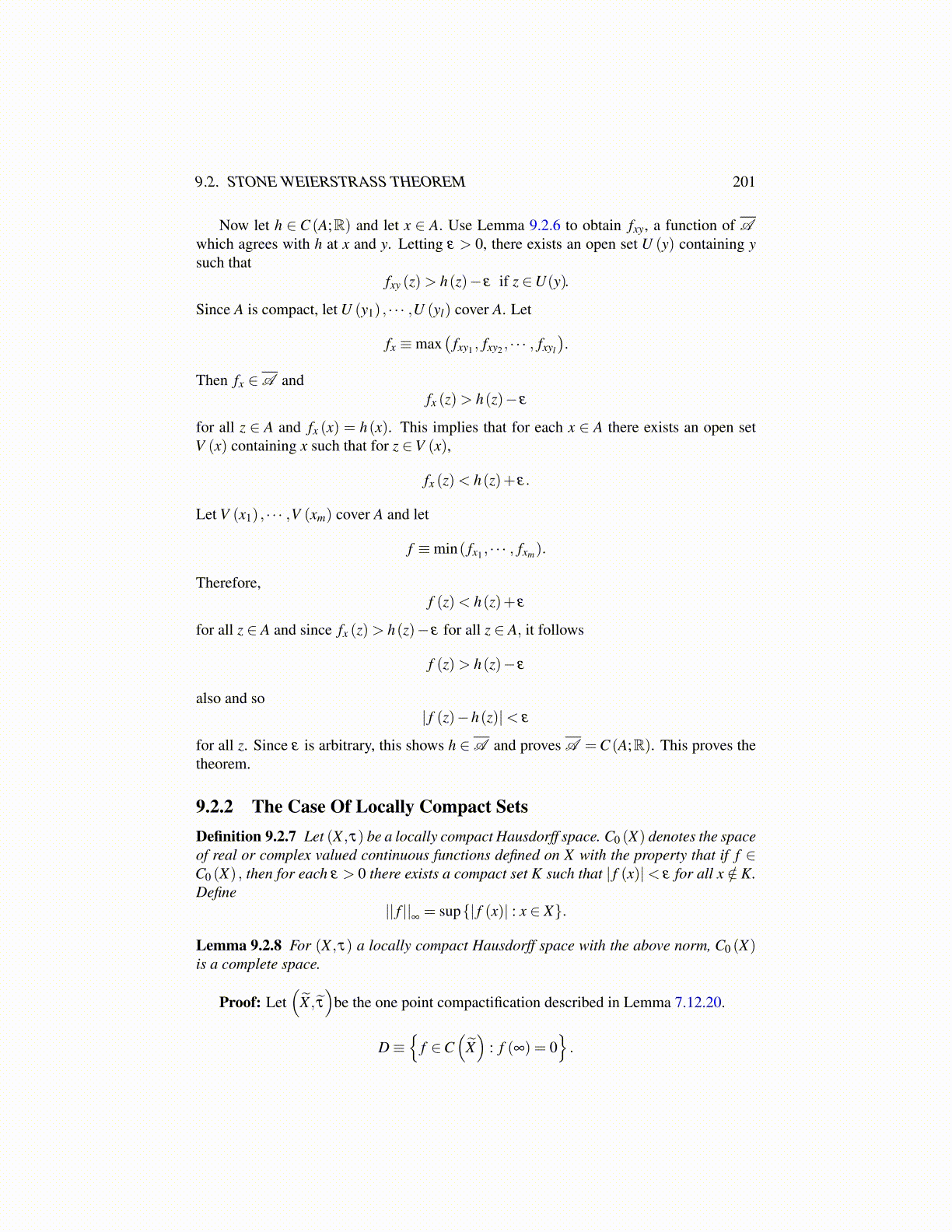
9.2. STONE WEIERSTRASS THEOREM 201
Now let h ∈ C (A;R) and let x ∈ A. Use Lemma 9.2.6 to obtain fxy, a function of Awhich agrees with h at x and y. Letting ε > 0, there exists an open set U (y) containing ysuch that
fxy (z)> h(z)− ε if z ∈U(y).
Since A is compact, let U (y1) , · · · ,U (yl) cover A. Let
fx ≡max(
fxy1 , fxy2 , · · · , fxyl
).
Then fx ∈A andfx (z)> h(z)− ε
for all z ∈ A and fx (x) = h(x). This implies that for each x ∈ A there exists an open setV (x) containing x such that for z ∈V (x),
fx (z)< h(z)+ ε.
Let V (x1) , · · · ,V (xm) cover A and let
f ≡min( fx1 , · · · , fxm).
Therefore,f (z)< h(z)+ ε
for all z ∈ A and since fx (z)> h(z)− ε for all z ∈ A, it follows
f (z)> h(z)− ε
also and so| f (z)−h(z)|< ε
for all z. Since ε is arbitrary, this shows h ∈A and proves A =C (A;R). This proves thetheorem.
9.2.2 The Case Of Locally Compact SetsDefinition 9.2.7 Let (X ,τ) be a locally compact Hausdorff space. C0 (X) denotes the spaceof real or complex valued continuous functions defined on X with the property that if f ∈C0 (X) , then for each ε > 0 there exists a compact set K such that | f (x)|< ε for all x /∈ K.Define
|| f ||∞= sup{| f (x)| : x ∈ X}.
Lemma 9.2.8 For (X ,τ) a locally compact Hausdorff space with the above norm, C0 (X)is a complete space.
Proof: Let(
X̃ , τ̃)
be the one point compactification described in Lemma 7.12.20.
D≡{
f ∈C(
X̃)
: f (∞) = 0}.